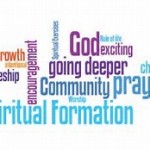CAFE: Reconciliation
At one our our CAFE gatherings we discussed the sacrament of Reconciliation. Here are the highlights from the meeting: We began with the Prayer of St. Francis. We then invited participants to choose, from a series of images, the picture that spoke to them about
